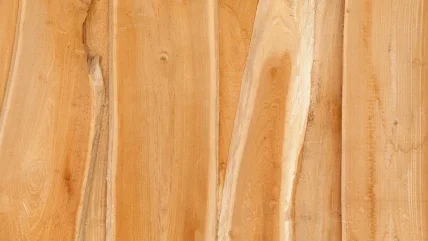
The aim of this article is to inform readers about a recent finding by Advachem SA. Dr Georges Francis presented a paper on this subject at the European Wood Based Panels Symposium in Hamburg in October, 2018, which he explains here. The title of the paper was: A novel additive for wood based panels which can play the roles of flame retardant, formaldehyde catcher and hardener.
Advachem is located in Hautrage, in Belgium, 70km from Brussels and 240km from Paris. This strategic position of the factory, close to the highway between Brussels and Paris enables Advachem to reach a 700km range, and more, to export its chemical production.
The company’s main market is, of course, Belgium, but it also serves Luxembourg, the northern half of France, the western part of Germany and the Netherlands.
Advachem employs 42 people and is involved in the glue sector for wood based panels. Production capacity is 240,000 metric tons of formaldehyde-based resins and 130,000 metric tons of urea formaldehyde concentrate (UFC), produced by three units for continuous production.
The range of resins includes more than 20 glues: UF and MUF for F4*; CARB2; EPF-S for E1 MDF and particleboard panels, both standard and moisture-resistant.
The company’s R&D and technical assistance services’ activities have always occupied a major place at Advachem. Indeed, Advachem is always researching innovations that can meet the real needs of its customers. For example, it provides advice concerning glue mixtures and additives and it proposes workable solutions to any problem a customer may come up with.
Introduction
Most of the wood based panels produced in Europe are agglomerated with aminoplast binders, which remain – by far – the best compromise in cost/performance and ease of use for such applications.
These binders are thermo-setting resins obtained by controlled poly-condensation of formaldehyde, urea and, possibly, melamine. The commercial presentation of these products is a pre-condensate, or a pre-polymer, in an aqueous phase of welldefined specifications.
The final condensation is achieved completely during the cooking of the panel in the press, by the action of the temperature and, generally, the acidification additive, which is the hardener.
A major consumer of these panels is the furniture and interior products sector.
Successive revisions to building and construction codes of practice have increased the requirements for materials to meet specifications with respect to low formaldehyde emission; and to high resistance to spread of flame.
For example, the new US formaldehyde rules are now in effect in all its states and the limit is CARB2, whereas in Europe, we have E1- E0.5 and E0.33.
It was evident, therefore, that the panel products industry was faced with increasing demand for flame retardant panels, with low formaldehyde emission, simultaneously.
However, the ability of the industry to respond effectively to this increasing demand was hampered by the limitations of the availability of adequate additives.
It was thus clearly urgent to propose new additives to meet these needs.
A new additive for panels
The aim of this paper is to inform on a recent finding of Advachem concerning a new additive which imparts both fire resistance and low formaldehyde emissions to panel products.
In developing this additive, the following issues were considered to be important:
- The product should be available in an aqueous-based reagent system
- The pH of the product should be slowly acidic to near-neutral
- The product should be capable of tolerating high platen temperatures
- The required resin addition level should be normal, not higher
- The product should be able to give the panel Class B-S2-d0 as a fire retardant
- The product should be able to provide the panel with low formaldehyde emission, meeting E0.5 and CARB2 standards
- The product should be considerably “userfriendly”, with ease of handling.
The new additive is marketed under the name “Advachem CF01”.
Flame retardant panels were tested according to the method called SBI (Single Burning Item test). It is a completely new method for fire testing on a medium scale and has been developed through the work of a group of representatives from fire regulators in all CEN countries.
The idea is to simulate the effect of a burning wastepaper basket in the corner of a room. The building product has to be tested 1.5m off the floor, mounted in a corner, and exposed to flames from a triangular gas burner.
The test equipment, meanwhile, is enclosed in a small room with an exhaust system. Heat and smoke (S) production are measured continuously. Burning (B) droplets (D) and flame spread are observed.
Conclusion
This additive appears to offer a number of advantages to the panel products industry. The fact that it can be applied in an aqueous state, and has a pH near neutral, means that it can be handled and used in relative safety.
The product can impart good resistance to flame – and a very low formaldehyde emission level – to panel products. Furthermore, the physical properties of the panels are not compromised.
Perhaps most importantly, our additive is capable of tolerating high platen temperatures, such that significant productivity improvements can be realised.






